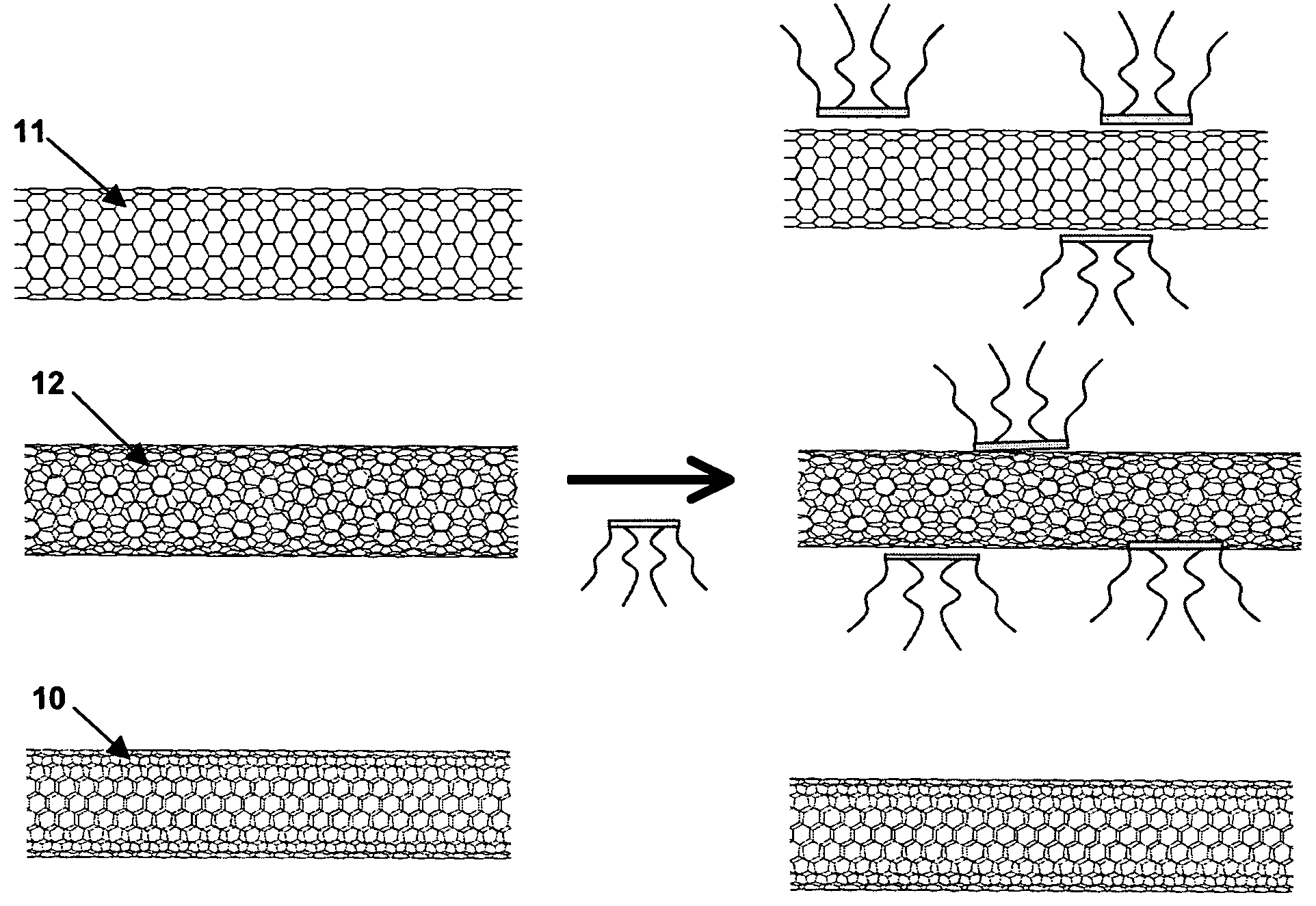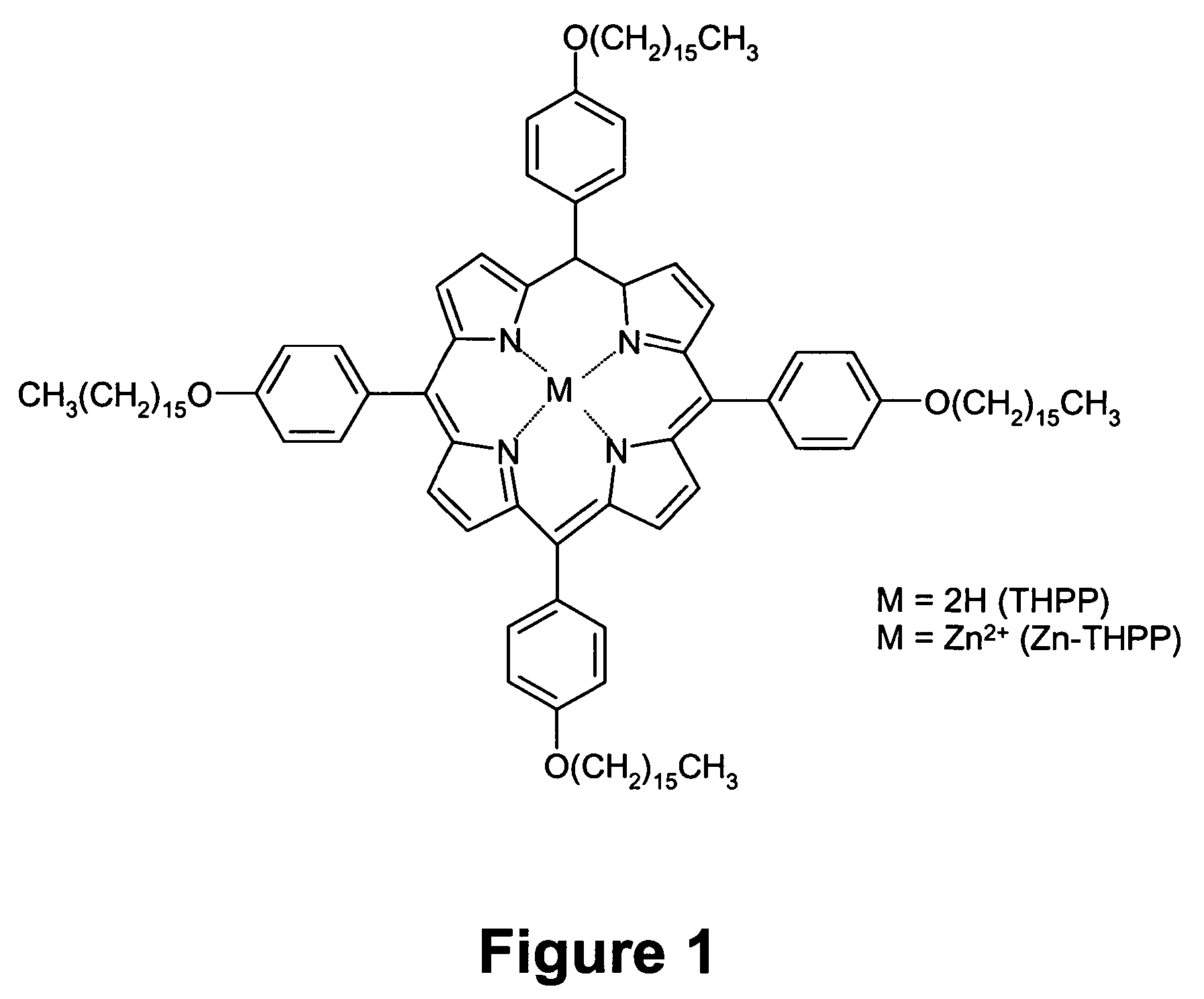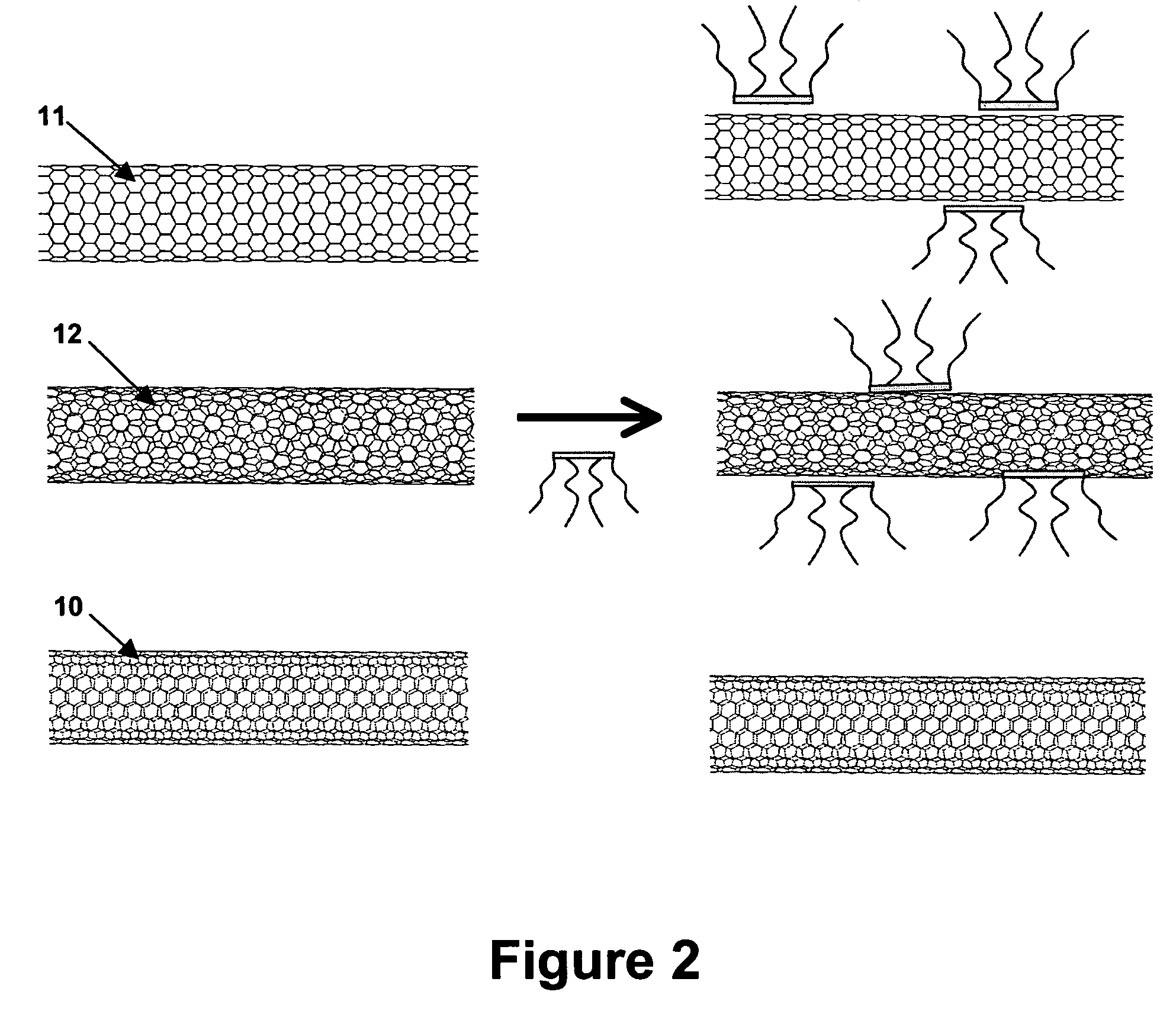Process for separating metallic from semiconducting single-walled carbon nanotubes
a technology of semiconducting single-walled carbon nanotubes and separation methods, applied in the direction of solid separation, separation by centrifugal force, biological material analysis, etc., can solve the problems of limited success of methods
- Summary
- Abstract
- Description
- Claims
- Application Information
AI Technical Summary
Problems solved by technology
Method used
Image
Examples
example 1
[0050]SWNT samples were produced by use of an arc-discharge method as is generally known in the art. Samples were purified via oxidative acid treatment according to established procedure. A separation agent, 5,10,15,20-Tetrakis(hexadecyloxyphenyl)-21H,23H-porphine (THPP, shown in FIG. 1 where M=2H) was synthesized by coupling p-hexadecyloxybenzaldehyde with pyrrole in glacial acetic acid, followed by column chromatography separation and structural characterizations.
[0051]A purified SWNT sample (100 milligrams) was added to a 20-milliliter solution of THPP in chloroform (10 mg / mL), and the mixture was sonicated (Fisher Scientific FS20, 70 W, 42 kHz) for 48 hours. The chloroform was then removed on a rotary evaporator, and the solid mixture was extracted repeatedly with hexanes, coupled with vigorous centrifuging (about 3,100 g) for 20 minutes, to remove any free, unassociated THPP. Following the extraction process, 10 milliliters of tetrahydrofuran (THF) was added to the solid sample...
example 2
[0058]The process described above in Example 1 was performed on a HiPco SWNT sample purchased from Rice University. FIG. 7 illustrates the Raman features of the recovered-HiPco-SWNT sample (solid line) and the free-HiPco-SWNT sample (broken line) with 785 nm (1.58 eV) excitation. For HiPco SWNT samples prior to processing according to the disclosed invention, the expected absorptions are: M11˜500-600 nm and S22˜650-900 nm. Thus, the 785 excitation probes predominantly semiconducting nanotubes. The Raman intensities of the sample enriched in semiconducting nanotubes should therefore be much higher than those of the sample enriched in metallic nanotubes. This is the case, as can be seen in reference to FIG. 7. The recovered-HiPco-SWNT sample has much higher Raman intensities than the free-HiPco-SWNT sample, consistent with the recovered sample being enriched in semiconducting SWNTs and the free sample being enriched in metallic SWNTs. In addition, the G-bands of the two samples were f...
example 3
[0060]The separation process described in Example 1 was attempted using Zn-THPP (illustrated in FIG. 1 where M=Zn2+). No interaction leading to the solubilization of SWNTs was observed. This suggests that the interactions of THPP with semiconducting SWNTs are specific to the porphyrin free base, and hindered upon the chelation of a metal cation, which would destroy the planer geometry and alter the electronic characteristics of the molecule. The negative results with the use of metalloporphyrins also suggest that the selectivity toward semiconducting SWNTs is associated with THPP, not fragments of decomposed THPP, because porphyrins with and without the center-chelated metal share similar decomposition patterns.
PUM
| Property | Measurement | Unit |
|---|---|---|
| temperature | aaaaa | aaaaa |
| temperature | aaaaa | aaaaa |
| temperature | aaaaa | aaaaa |
Abstract
Description
Claims
Application Information
 Login to View More
Login to View More - R&D
- Intellectual Property
- Life Sciences
- Materials
- Tech Scout
- Unparalleled Data Quality
- Higher Quality Content
- 60% Fewer Hallucinations
Browse by: Latest US Patents, China's latest patents, Technical Efficacy Thesaurus, Application Domain, Technology Topic, Popular Technical Reports.
© 2025 PatSnap. All rights reserved.Legal|Privacy policy|Modern Slavery Act Transparency Statement|Sitemap|About US| Contact US: help@patsnap.com



